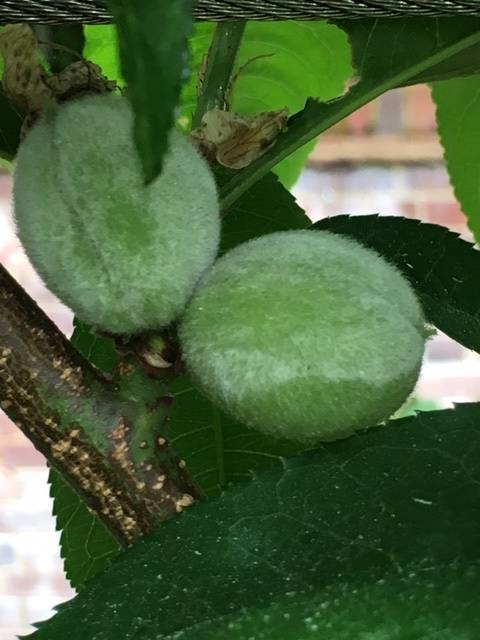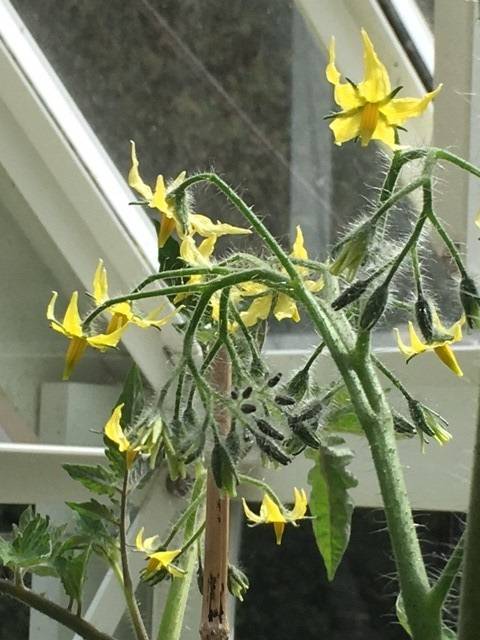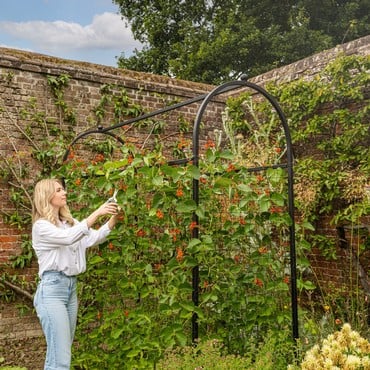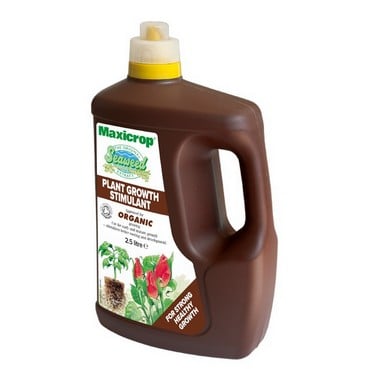 May has certainly been a challenging month for the Kitchen Gardener this year. Mother Nature has been stretching our capabilities with extremes of temperature and very little rainfall. We’ve ranged from severe late frosts to sweltering heat in a very short space of time but, whilst we’ve had the occasional disaster, on the whole we are surviving the unusual spring conditions.
May has certainly been a challenging month for the Kitchen Gardener this year. Mother Nature has been stretching our capabilities with extremes of temperature and very little rainfall. We’ve ranged from severe late frosts to sweltering heat in a very short space of time but, whilst we’ve had the occasional disaster, on the whole we are surviving the unusual spring conditions.
Earlier in the month, at a time when we would be confident that the winter frosts were over, we planted out our climbing beans at the base of their support. Two nights later, we were caught out by an unexpected severe overnight frost and the plants suffered. Consequently, we lost around half of them. Fortunately, we had already started off a second sowing in the greenhouse and a couple of weeks later we were able to plug the gaps with new healthy plants. Our other casualty of the weird spring weather is our parsnip crop. Parsnips are a staple here in Stephanie’s Garden. They always perform well, have no pest or disease problems and we enjoy bumper crops year-on-year. This year, despite three successional sowings, we have only a handful of very small seedlings peeping through the soil. Our seed was fresh, as it is every year. We can only hope that they will appear later than normal and we will still have parsnips for the Christmas dinner table.
The late cold weather delayed our plans to plant out our more tender crops until later than we would normally expect. Crops such as courgettes, squash, sweetcorn and runner beans were put into the ground in the last week of May where we would normally plant them a good couple of weeks earlier. They haven’t suffered, though, as they were growing happily away in the cold frame and now look healthy in their final growing spaces. They are all being treated to plenty of water and a weekly feed of liquid seaweed and will continue to do so right through the growing season.
Planting out these crops meant that we were finally able to free up much needed space in the greenhouse and cold frame which in turn allowed us to pot on our aubergines, cucumbers, peppers and tomatoes into the large pots they will remain in all summer. They are now evenly spaced on the greenhouse staging which has a layer of capillary matting to help keep the atmosphere humid through the summer. Having so many plants crammed into the greenhouse for much longer this year led to our first attack of whitefly that I can remember. We hung nematodes around the plants earlier in the month and the whitefly problem resolved itself pretty quickly.
Despite a weekend of significant rainfall in mid-May, and thunder storms over the past couple of days we are still in the midst of a very dry spring in our part of the world. We have spent a lot of the month watering our crops in the absence of the essential spring rain. Our crops have been heavily reliant on artificial watering due to the empty water butts. To avoid wasting water, we have been using soaker hoses to aim water at the base of the plants where it is needed, and watering cans for plants growing in pots. Crops grown in the ground, such as brassicas are given a thorough soaking once a week and are thriving. Plants in pots are watered every other day at present and this is keeping them healthy. The greenhouse plants are watered most days.
Our plant feeding regime is well under way and we are incorporating this with the current watering scheme. Inside the  greenhouse the first flowers and fruits have appeared on our tomatoes, cucumbers, aubergines and peppers which signals that it is time to begin feeding the plants weekly with a liquid tomato food. This will continue for the whole cropping season. Outside, flowering crops such as courgettes, beans, peas and squashes are fed weekly with liquid seaweed whilst leafy crops such as brassicas are treated to fish, blood and bone every four weeks.
greenhouse the first flowers and fruits have appeared on our tomatoes, cucumbers, aubergines and peppers which signals that it is time to begin feeding the plants weekly with a liquid tomato food. This will continue for the whole cropping season. Outside, flowering crops such as courgettes, beans, peas and squashes are fed weekly with liquid seaweed whilst leafy crops such as brassicas are treated to fish, blood and bone every four weeks.
In the last few days we have planted out outdoor crop of tomatoes into pots in a growhouse. These plants were a later sowing that have been waiting in the greenhouse. They will hopefully extend the fruiting season, bearing fruit when the greenhouse crop is nearly over. We always make sure to position them well away from the potatoes to prevent either crop spreading blight to the other; should we be unfortunate enough to suffer it.
Towards the end of May, when the temperatures began to soar, we took the covers off our peach, nectarine and apricot trees. They have really enjoyed the micro-climate created by the covers and have been thriving. They have put on a lot of healthy green growth and are currently adorned by lots of baby fruits. We are very excited and hoping for a good crop as this is only the second year that the trees have been in the garden and last year they were just settling in. We are watching them very closely and keeping our fingers crossed.
Amongst all of the challenges and planting out that we have been undertaking, we have also begun to reap the rewards of our labours and started harvesting. The sugar snap peas have plenty of sweet pods ready for picking and lots of flowers to continue the crop. The broad beans, which seemed slow to get going, are now showing small pods that are beginning to swell. The asparagus is cropping, although not to the extent of previous years. Salad leaves and rocket have really enjoyed the conditions and we have been picking leaves for many weeks now. The rhubarb has also been amazing this year.
The strawberries are currently covered with green fruits that are beginning to swell and we are keeping them well watered and fed to encourage large sweet juicy fruits in a few weeks time. The blueberry and blackcurrant bushes are at a similar stage. The anticipation is mouth-watering!
Despite a busy month in the garden, we still found time to visit the Chelsea Flower Show this month and marvel at the beautiful vegetables and flowers. It is always a pleasure to drink in the sight of stunning gardens and plants and return to your own garden full of inspiration. It is also reassuring to speak to growers and realise that they are facing the same challenges posed by the weather and to know that you are not alone when things don’t quite go as planned!
Here are some of the jobs we’ve got planned for June in Stephanie’s Kitchen Garden:
- Plant out sweet potatoes and leeks
- Apply nemaslug to the soil.
- Feed crops regularly.
- Sow more salads, peas, beetroots and carrots.
- Keep watering when conditions are dry.
We’re always here to offer help and support. Go to the Ask the Expert section on our website and email horticultural advisor Jo Blackwell with your queries and she’ll do her best to help.
We’re busy tweeting about all things Harrod Horticultural – what we’re doing, special offers, gardening tips and advice and you can always use Twitter or Facebook to get in touch with us as well. With our webteam manning the Tweet desks and Facebook site, you can be sure you will get the best service we can offer.


























